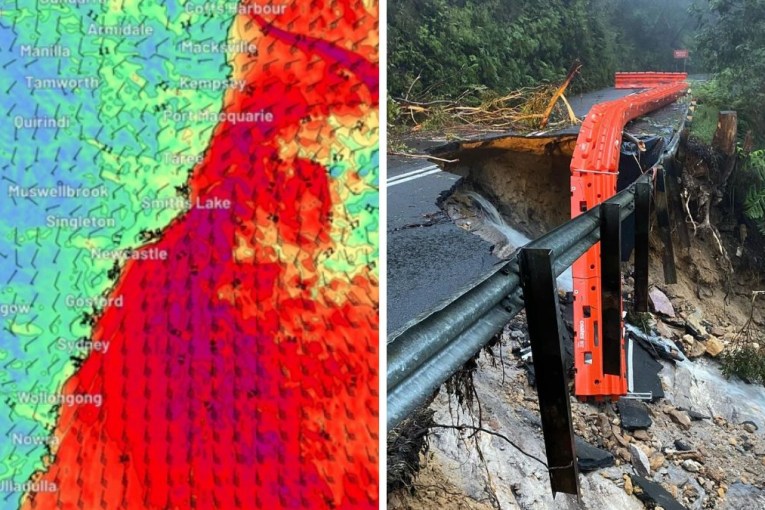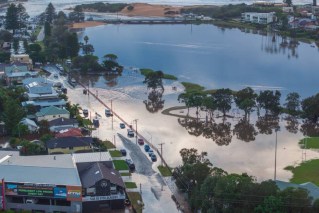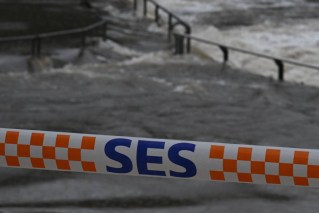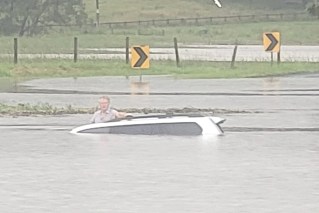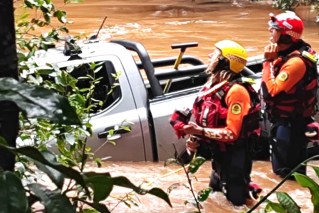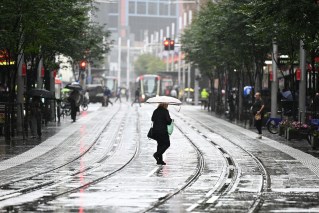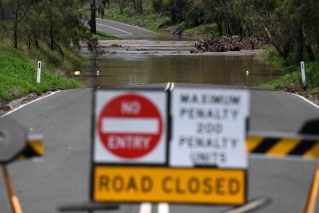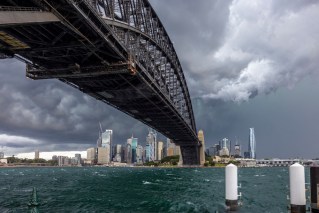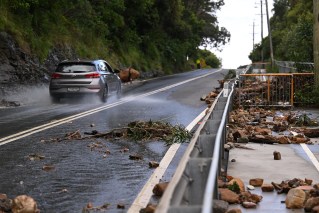Massive rain band brings flood danger to four states

There are flood warnings across four states as heavy rain falls on already saturated soil in eastern Australia, including record deluges in some areas.
A deepening low-pressure system up to 3000 kilometres long is covering parts of Queensland, NSW, Victoria and South Australia, with heavy falls expected for the rest of Thursday and into Friday.
Flood watches extend from near Clermont, north of Emerald in Queensland through much of NSW and South Australia’s east into northern and eastern Victoria.
“This system really begins to stand up today (Thursday),” weather bureau senior meteorologist Jackson Browne told the ABC
“In terms of relative risk today being the peak day of rainfall.”
Tweet from @BOM_au
Forecaster Weatherzone said widespread falls of 20-40 millimetres were likely on both days, with accumulated totals of up to 100 millimetres in some places for the 48-hour period.
It comes as parts of NSW have already endured their wettest November on record.
Queensland has also had its heaviest November rain in decades. The Bureau of Meteorology said 121 millimetres of rain fell in Brisbane in the 24 hours to Thursday morning.
Already on Thursday some areas in NSW have copped a drenching, with a rain station south of Griffith measuring 60 millimetres in an hour.
Snowball, south-east of Canberra, had 28 millimetres in an hour. In Braidwood, where 15 millimetres fell in half an hour, motorists were rescued from the Kings Highway after being trapped by flash flooding.
There are also fears of renewed flooding in Gunnedah and Forbes, which have been inundated by recent floodwaters.
The State Emergency Services has already responded to almost 3000 calls for help during the past week of rain and flooding and the Bureau of Meteorology has warned of a renewed flood risk.
Tweet from @NSWRFS
SES Commissioner Carlene York said the SES had been “extremely busy” – and it was important for people to prepare for possible evacuations.
“Have an evacuation kit ready, get your important documents, know who to contact and know where to go,” Ms York said.
BoM hazard preparedness and response manager Jane Golding warned that with catchments saturated, dams full and river levels high, it wouldn’t take much to spark a flood.
“More rain means more flooding,” Ms Golding said on Wednesday.
In NSW, the areas where flooding is a renewed risk include the Belubula, Hunter, Macintyre, Macquarie, Peel, Castlereagh, Bell, Tumut and Murrumbidgee Rivers.
In addition to the Lachlan and Namoi that Ms Golding called “areas of key concern” for riverine flooding, there are also current warnings for the Severn, Gwydir and Paroo Rivers.
Areas including Coombah, Hay, Wilcannia, Broken Hill, Ivanhoe, Menindee and Balranald are also in the rain’s path.
Flooding closed the Barrier Highway west of Broken Hill on Thursday, with water over the road at Cockburn, on the South Australian side of the border.
Tweet from @BillOrmonde_2
Western, central and southern Queensland is also on flood watch.
Areas of most concern include the Belyando and Suttor Rivers to Burdekin Falls Dam, Dawson and Don Rivers, Comet and Nogoa Rivers, Connors, Isaac and Styx Rivers and Plane Creek, Condamine Rivers, Macintyre River, Weir River, Moonie River, Balonne River, Wallam and Mungallala Creeks, Warrego River, and the Paroo, The Big Warrambool, Bulloo, Barcoo and Thomson rivers.
“Very heavy rainfall rates are possible for some areas particularly in association with thunderstorms, which are likely to cause localised flooding,” the BOM said.
In Victoria, there are concerns for parts of Gippsland and the north-east, as well as a minor flood warning for the Kiewa River.
In NSW, the SES has expanded its operations to try to mitigate flash flooding risks, having already rescued people who tried to cross floodwaters from the roofs of their stranded cars.
Ms York advised those in rural and regional areas where heavy rain was expected to consider moving livestock and domestic animals to higher ground.
Already some cows and horses and trapped wild animals have had to be rescued by a uniquely skilled SES team.
“We can never be sure of where the floodwaters are actually going to go so you need to be inspecting your properties regularly and try and put your animals as quickly as possible up into higher ground,” Ms York says.
Summer is likely to remain soggy for much of Australia, with a La Niña cycle declared on Tuesday, heightening the risk of further flooding and tropical cyclones.
– with AAP
